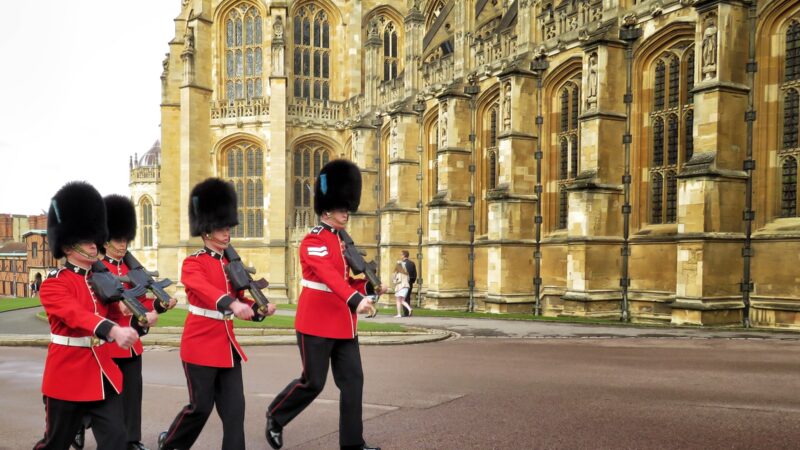Not every monarch has been an upstanding spouse. Many of the men ruling our kingdom have had a bit on the side whilst remaining married. Some had quick flings whilst others had longstanding partnerships.
It was a different era- royal men were expected and allowed to have mistresses. Their marriages were rarely ever for love. Those who were lucky enough to love their spouses only did after they’d married. Their wives were expected to be naive virgins who would only be there to have children. Kings might have insatiable appetites and want something more. So long as they weren’t too open about it, they could have as many women as they wanted.
Some queens, such as Queen Alexandra, tolerated affairs. Others, such as Isabella of France, did not. There wasn’t much they could do- some were forced to accept the mistresses as their ladies-in-waiting. The luckiest of them got to choose who their mistresses were.
It could be unfortunate. A king who spent more time with his mistresses wouldn’t give his wife a child. Catherine of Braganza suffered three miscarriages and never had any children due to her husband, Charles II, preferring other women. Charles had no legitimate heirs with poor Catherine, but had at least twelve illegitimate children.
Here are some of the most notable women who caught the eye of British kings:
Rosamund Clifford (c. 1150-1176)
Mistress to: Henry II
Time: Pre- 1174-1176
Husband: None
Children: None
As with many women of the era, we know shockingly little about Rosamund Clifford. Ancient lore describes her as the most beautiful woman of all time, the Helen of Troy of her day. We know that she was not yet thirty when she died, yet her name lives on years later.
Rosamund was the daughter of Walter Clifford and the former Margaret de Toeni. Historians estimate her birth to have been between 1148 and 1150. The affair between Henry and Rosamund was publicly acknowledged by the King in 1174, but it’s believed that it has been going on a good deal longer.
Whilst Henry had initially had a happy marriage with his wife Eleanor of Aquitaine. The pair had eight children, including five sons, so Eleanor had fulfilled her duty in medieval eyes. Still, his eyes wandered and Rosamund was one of the women who he noticed.
A common legend, one that is almost undoubtedly false, states that Henry built an elaborate maze so that he could rendezvous with Rosamund. Eleanor reportedly discovered her and forced her to either drink poison or take a dagger to her chest. Rosamund, according to legend, poisoned herself. It is more likely that Rosamund simply died of one of the many illnesses that occurred at the time.
Since so little is known about her, we cannot build an accurate picture of Rosamund. Contemporaries would often exaggerate the beauty of noble and famous women, as beauty was seen as goodliness, so Rosamund may not be the angel that we’ve been taught. That being said, as she was a mistress, society may have been harder upon her so they may be honest in their view.
Eleanor of Aquitaine was also widely reviled at the time as ‘unwomanly’ due to her strong character and political nature. It’s no wonder that it’s rumored Eleanor poisoned her love rival. Rosamund would possibly be described as so beautiful because she was comparatively good and feminine in society’s eyes.
Alice Perrers (1348-1400)
Mistress to: Edward III
Time: 1366-1377
Husbands: Janyn Perrers (1360-1364), William de Windsor (1376-1384)
Children: John, Jane, Joan (believed to be with Edward)
Whilst Rosamund Clifford was the picture of beauty, kindness and grace, our next mistress had quite the opposite reputation.
Alice Perrers was widely reviled as a conniving gold-digger who preyed upon an old, grieving king. The wife of Edward III, Philippa of Hainault, was an extremely beloved queen for her graciousness, charity and acts of mercy. Alice had started an affair with Edward towards the end of Philippa’s life but it was not open until after the Queen died.
She’d been first married at the age of 12, shocking for us but very normal for the time. Alice was only 18 when she arrived at court, whilst Edward was 55. We know nothing about when the affair started but they were discreet until after Philippa died. Edward did genuinely love his wife and whilst affairs were tolerated, a king couldn’t afford to be too open about it.
It was this openness that really angered society. Alice was showered with gifts and money from the older king, becoming one of the richest women of the time. Most controversially, Edward presented Alice with jewellery that had belonged to his late wife. If that wasn’t bad enough, he overrode her will, as Philippa had stated that those jewels should have been given to a friend.
Another shocking breach of protocol and etiquette occured when there was an event at Smithfield. Edward presented Alice as ‘The Lady of the Sun,’ and had her sit with him. The senior lady at the event should have either been the wife of his eldest son or one of his daughters. A mistress should never have such an honour.
When enemy powers decided that Alice needed to be out, the King was unable to stop them. Alice was banned from both court and her lover, but this lasted only three months or so. In order to protect herself, Alice had eloped with William de Windsor several months before. She knew that once Edward died, she’d have no protection so she needed to wed. Both strenuously denied it. Edward believed her.
Ultimately, Alice turned out to be right. Edward’s death afforded her nothing, and there were even rumours she’d stolen the ring from his finger as he died. Courtiers got the new boy king, Richard II, to sentence her to exile. Fortunately, Windsor came out and admitted the marriage. This loophole allowed Alice to stay in the country, but Windsor got all of her properties and fortune. Considering women had no legal recourse against their husband, it’s probably what Alice should have expected.
Alice was widowed in 1384. With no children, Windsor made his nephew his beneficiary. Windsor had left Alice a trust, but the nephew did not bother to provide for her. Alice fought it legally but never saw it resolved. Her acknowledged children with the king had been brought up separately from the court. John had already died, whilst the women were married. We do not know anything about their relationship.
It’s believed that Alice died between 1400 and 1401. Historians view her better than her contemporaries, noting it was her business acumen that got her where she was, whilst also noting that Edward did spoil her somewhat.
The contemporary view of Alice probably stems from the deep popularity of Queen Philippa and the age discrepancy between the two lovers. This is somewhat strange, as there were many couples with large age gaps in this period. Perhaps it is because they believed Edward to be old and senile- 55 was a pretty good age back then. Whilst there is no doubt Alice was probably ambitious and cunning, she also probably isn’t the villain they’d like you to think.
Elizabeth ‘Jane’ Shore (c. 1445-c. 1527)
Mistress to: Edward IV
Time: 1476-1483
Husband: William Shore (?-1476), Thomas Lynom (1484-?)
Children: Julianne (with Lynom)
Born Elizabeth but known as Jane, Jane Shore was yet another mistress not treated kindly. From a wealthy family, Jane was afforded an education better than many girls of her era. Her intelligence and beauty made her a popular candidate for marriage. Eventually, Jane’s father had her married to a wealthy banker named William Shore. Whilst Shore seemed to care for his wife, Jane did not seem to reciprocate. She had the marriage annulled, ostensibly because of Shore’s apparent impotency:
‘She continued in her marriage to William Schore […] and cohabited with him for the lawful time, but that he is so frigid and impotent that she, desirous of being a mother and having offspring, requested over and over again the official of London to cite the said William before him to answer her concerning the foregoing and the nullity of the said marriage…’
It is believed Jane met Edward IV after he returned from France. Jane’s beauty and intelligence captivated Edward and she became the favourite out of his many lovers. Unlike the others, he did not discard her quickly and the relationship lasted. Other mistresses, however, had been given many gifts. Edward was married to Elizabeth Woodville but was known to have affairs.
Jane wielded a fairly large amount of power at the time, though did not initially receive the same level of hate. She was known to request the reprieve of allies who had been imprisoned. Jane was widely praised as a lively, intelligent and funny woman to be around. The power she wielded only increased after Edward’s death.
During the role of the Protector, the later Richard III, Jane was incriminated in a plot against the government. She’d been in romantic relationships with the men who cared for the boy king Edward V. Jane used those relationships to ensure alliances. Richard, the then-Duke of Gloucester accused her of conspiracy, sorcery and witchcraft.
Jane was imprisoned and required to do a public act of penance. Their had not been enough evidence to charge her with sorcery, so Jane was charged with prostitution. As penance, Jane was forced to walk the streets of London barefoot in a special garment and carrying a taper. The public sympathised with her quiet dignity throughout the ordeal.
Whilst she was imprisoned, Jane became close to Thomas Lynom, Solicitor General. Despite Richard’s misgivings, the romance blossomed and Lynom married Jane. Jane lived the rest of her life in relative comfort and prosperity. Sir Thomas More wrote that she remained somewhat beautiful in old age. Jane died at the impressive age of 82.
Unlike Alice Perrers, Jane’s political actions did not cause her to be disliked. Jane was perhaps more feminine and traditional when influencing the king, as it was expected wives and other powerful women ask for ‘soft’ favours. Her wit and humour also likely offset any issues; Alice Perrers was accused of being haughty and overly ambitious.
Elizabeth ‘Bessie’ Blount (c.1498-c.1540)
Mistress to: Henry VIII
Time: Around 1519
Husbands: Gilbert Tailboys, 1st Baron Tailboys of Kyme (1522-1530), Edward Clinton, 1st Earl of Lincoln (1533/34-c.1540)
Children: Henry FitzRoy (with Henry), Elizabeth, George, Robert (with Tailboys), Bridget, Catherine and Margaret (with Clinton)
Bessie Blount may be one of the most impactful mistresses we’ve ever had and it’s not through politics.
Born to minor nobles, Bessie became an attendant to Catherine of Aragon. As with others, the only thing known of Bessie is that she was very beautiful. Henry VIII was known for being lustful and it’s unsurprising that he began an affair with Bessie. Bessie was smart enough to know she’d only ever be a mistress and not a wife and was seemingly content with her position. There is no evidence that Bessie was at all political.
Bessie’s greatest contribution was the birth of Henry’s illegitimate son, Henry FitzRoy, on the 15th June 1519. Henry was thrilled with having a healthy son and bestowed many gifts upon the boy. The affair soon ended- probably because of Mary Boleyn- so Henry set Bessie up to be married. Bessie had three children with her second husband and three with her third. She died at about 42 years old.
Interestingly, Henry kept this affair discreet. Until his affair with Anne Boleyn, Henry was ‘respectful’ of wife Catherine and kept his liaisons quiet.
Whilst this seems like a rather more uninteresting mistress, Bessie did do one important thing. Illegitimate children were common in history, especially ones sired by kings, so Henry FitzRoy is definitely not special. Still, he was a healthy son. Henry hadn’t had any of those up to that point and wouldn’t for a while. He began to believe that if he could sire healthy sons, then the problem clearly lay with Catherine of Aragon. So began the seeds of discontent.
Bessie was widely lauded at the time for managing to show that Henry VIII could sire healthy sons. She was also uncommonly beautiful, graceful and musically talented.
Mary Boleyn (c.1499-1543)
Mistress to: Henry VIII
Time: Around 1520
Husbands: William Carey (1520-1528), Sir William Stafford (1534-1543)
Children: Catherine, Henry (with Carey), Edward and Anne (with Stafford)
Known as ‘The Other Boleyn Girl,’ Mary was on the scene earlier than her sister was.
It’s most likely that Mary was the eldest daughter and before Anne became Henry’s paramour, she was also the most infamous. She started life in comfort before being sent to France with Mary, Henry VIII’s sister, who was to become Queen of France. Mary Boleyn remained in France after the Queen was widowed quickly into the marriage. Whilst historians believe her promiscuity was exaggerated, Mary was definitely sleeping with King Francis.
Mary had quite the reputation when she returned to England. Francis had called her ‘his English mare.’ Again, whilst her promiscuity was exaggerated, society would have thought ill of her anyway. Francis did call her the greatest whore after all.
She married a man named William Carey in 1520. It was around this time that Henry and Mary began their affair. Carey was showered with gifts and positions, as was Mary’s father Thomas. Some believe Henry fathered Mary’s children but the King never acknowledged them. When Henry did move onto Anne, he requested dispensation for their marriage as he’d previously slept with her sister.
Mary was provided with a generous pension upon the death of her husband, but a secret marriage to a poor nobleman and soldier caused scandal. She had not asked for royal permission and the man in question, Sir William Stafford, was her social inferior. The new couple were sent away from court and cut off. Anne did send Mary some help after she was in dire straits.
There is little information on Mary after she left court. We know nearly nothing about Mary’s reaction to her siblings’ fall from grace and subsequent execution. It is likely that Mary’s marriage saved her from any problems, as she had been sent away before the scandal occurred. Some historians state that Mary tried to beg for her family but was turned down.
Mary lived a life of obscurity from then on. Her marriage was very happy but she died relatively young. Still, this is a much better deal than Anne or their cousin Catherine Howard got. Mary’s time as a mistress clearly influenced Anne, who refused to go down the mistress route straight away and become just another lover. Anne instead went for power and got it.
Lucy Walter (c.1630-1658)
Mistress to: Charles II
Time: 1648-1651
Husband: None
Children: James (with Charles), Mary (with Theobald Taaffe, 1st Earl of Carlingford)
Did Lucy Walter marry Charles II secretly? Well, historians are divided.
She isn’t as remembered as Barbara Villiers or Nell Gwyn, but is still important enough here. Charles first met Lucy when he was the King on the Continent, having fled from England upon the Civil War. Lucy’s family had similarly fled. The two soon met and began an affair. Charles would not be married for another two decades and Lucy was similarly unwed. Lucy would bear Charles’ son James in 1649. Charles recognised James as his.
When Charles was away fighting, Lucy had an affair with a married man and had a baby. Upon Charles’ return, the affair was ended. Lucy then lived a life of debauchery on the continent, causing scandal and problems wherever she went. She was lured back to England with her children, but was arrested as a spy and placed in the Tower of London. There was a huge outcry and Lucy managed her way to outfox her captors. Lucy returned to the continent and continued to cause embarrassment.
Lucy was only around 27 to 28 when she died, probably as a result of her lifestyle.
Their son, James, was made 1st Duke of Monmouth. Enemies of Catholicism and Queen Catherine of Brazanga proclaimed that Charles had secretly married Lucy and that James was thus air to the throne. They worried that Catherine would provide Charles with a Catholic heir or that his unpopular brother James would become King.
Upon his father’s death, James arrived back in the country. He attempted to mount a rebellion and used his claim as the king’s first son in hopes of gaining the crown. James was captured and given an audience by his uncle, the new King James II. Unfortunately, King James was not merciful and had his nephew executed.
Lucy lived a short but eventful life. She was described as very cunning, as evidenced by her ability to get out of sticky situations. Lucy lived a very different life to one expected of a 17th century woman- she was sexual, cunning and hedonistic when women were thought to be chaste, demure and modest.



